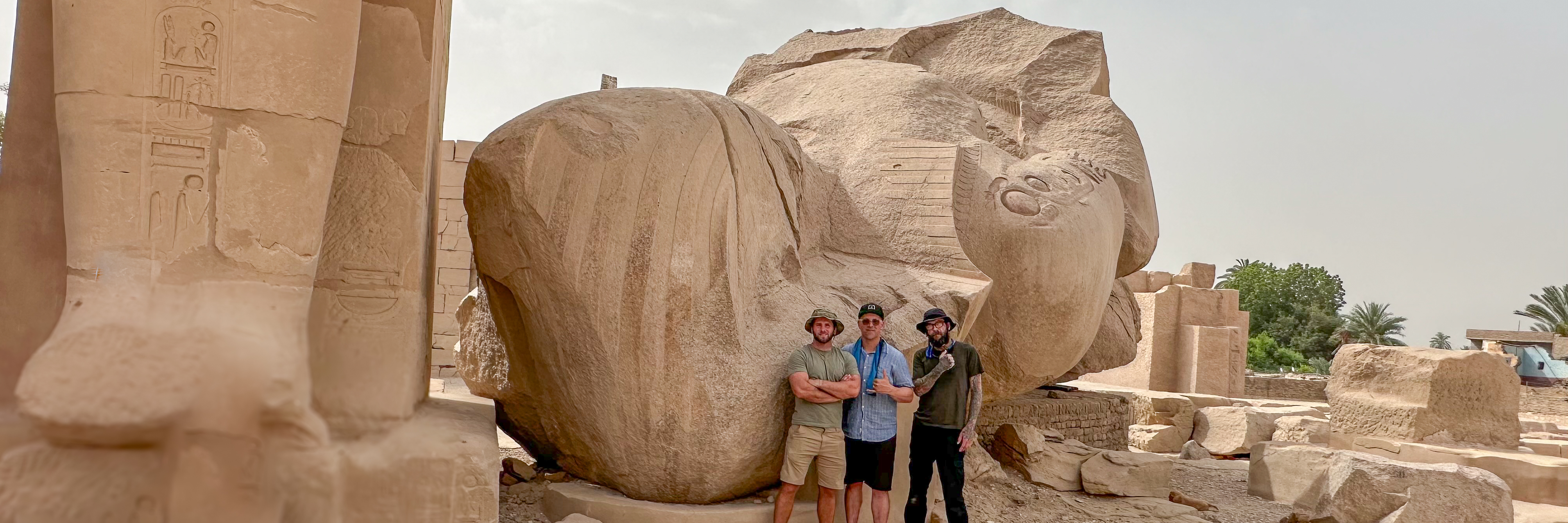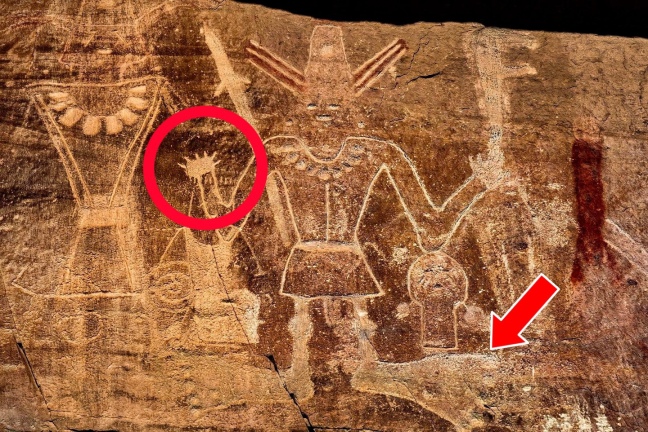
By Abbie Warnock-Matthews / with commentary added

Utah’s Uinta Basin is home to some very unique rock art featuring depictions that aren’t found anywhere else. These petroglyphs are often referred to as Classic Vernal Style, and are believed to have been created by the Fremont culture some time between 1-1200 A.D.

Unlike other rock art in Utah which depicts animals, hunters, and faceless anthropomorphs, these Dry Fork petroglyphs depict varying scenes of chaos.

These anthropomorphic figures have intensely decorated heads and shoulders, highlighted by horns, jewelry, and headpieces. Many are holding severed heads with pecked trails of tears flowing down their faces, and some are painted with red streaks of blood.

The most fantastic figurine of all featured amongst these Dry Fork petroglyphs is what is known as the “Bigfoot” for obvious reasons. He is indeed rare, as no other figure possesses feet of this size, proportion and nature anywhere else in this style or region. (1)
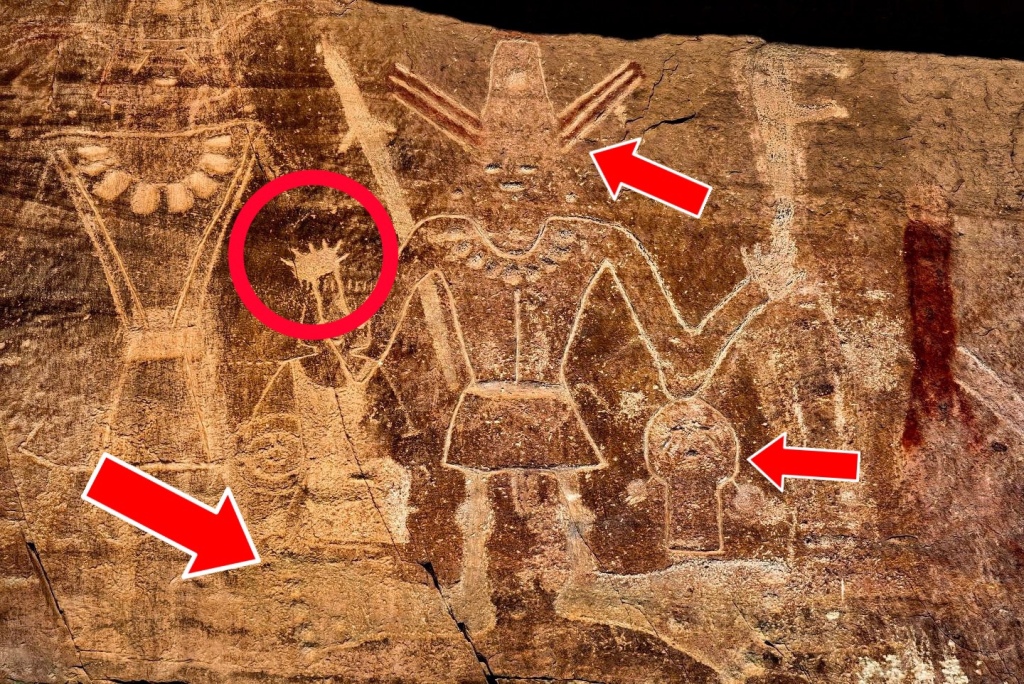
Aside from gigantic feet, this figure also features a strange head. Is he wearing an elaborate headdress, or is this rock art depicting an elongated skull with horns? What’s more? His hand on the left side of the photo features six fingers. The other hand may as well, but it is hard to tell for certain. Was the ancient artist depicting what he saw or maybe what his ancestors said they saw according to their oral traditions? Might this be depicting a hybrid demi-god from the old world that descended into the American south-west in ages past? (2)
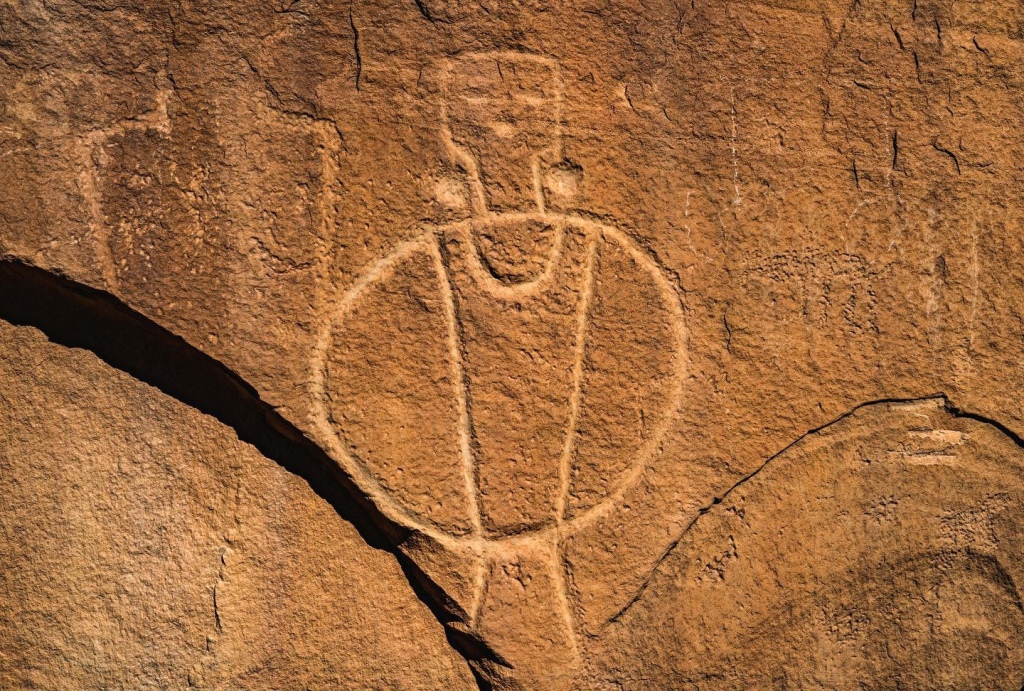
The circular shapes around some of the figures have been called “shields” by archaeologists, but I find it very interesting that all of the figures are depicted standing in the middle of those circles, with their bodies visible. It seems more like a depiction of a figure standing inside a specular light source, like a spotlight or tunnel. There are definitely aspects of these that seem shamanic or psychedelic in nature, especially when compared to other motifs in shamanic cave art.

Could this have been a tribe of fierce warriors defeating their enemies? Or are these depictions of vengeful gods, smiting their followers?
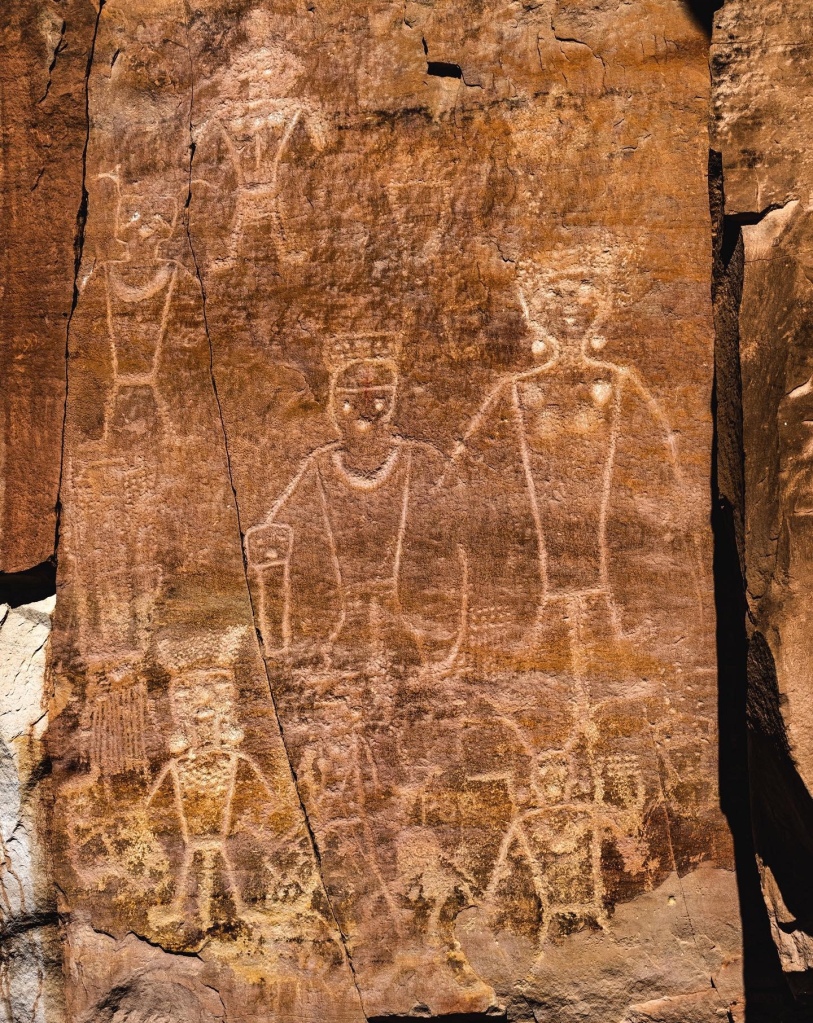
Follow Abbie Warnock-Matthews on Instagram
1 Abbie Warnock-Matthews
2 Derek Olson
3 Abbie Warnock-Matthews
